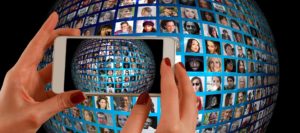From an interpersonal to a digital world
There has been an undeniable shift in focus from interpersonal to digital communication after the rise of the Internet. This shift in preferences has led to a general loss of the personal connection and development of face-to-face interactions.
Though the digital world has brought an abundance of new communication opportunities, such as the ability to connect with people across the world quickly and effectively, the quality of these relationships has taken a hit.
Why interpersonal skills are still relevant and effective
Millennials are often criticized for lacking effective critical thinking and interpersonal skills. Because of this, embracing face-to-face interactions and communicating in a succinct and effective manner are great ways for young professionals to stand out in the workplace.
Workplaces across industries are adopting more collaborative, team-centered environments. Even if you’re doing work online, you’re still expected to interact with colleagues, bosses, customers and/or clients to some degree. While emails and social media posts are quick and easy ways to relay messages to other people, face-to-face interactions help make deeper and more meaningful connections with others.
How to put these skills to practice
Developing effective interpersonal skills is something that you can do at any point during your career. The trick is recognizing the importance of these skills and consciously working to develop them.
One of the easiest habits to adopt is maintaining eye contact with the people you are speaking to. This shows the other person that you are paying attention to what they have to say and that you’re not distracted by your inbox or phone. This not only makes the other person feel more valued, but also helps you better understand their message.
While engaged in conversation with others, sometimes saying less is more. Most people enter conversations with the intention of interjecting their opinion whenever possible. Learning how to listen to hear rather than listen to respond can help you further comprehend what the other person is saying and also gives them the opportunity to fully develop their idea. This method can help the other person come to the conclusion that they were looking for on their own. The added bonus is the notion that you were an integral part of the process when in fact your contributions involved barely more than an agreeable nod.
Interpersonal and digital communication – the perfect pair
While interpersonal digital communication may seem to contradict each other, using them together can help you become the most effective communicator possible. The greatest way to reap the benefits of both is to learn how and when to use them both.
Try incorporating a mix of interpersonal and digital tactics into your professional tasks. Sending recap emails after meetings, continuing face-to-face conversations on social media or meeting a media contact for coffee are great ways to reinforce your ideas while using more of a variety of the different channels that are now at your disposal.
There’s no way to separate the real world from the digital world, so why work against it? Using these two communication forms in conjunction will help make your interactions with others more efficient and effective.
